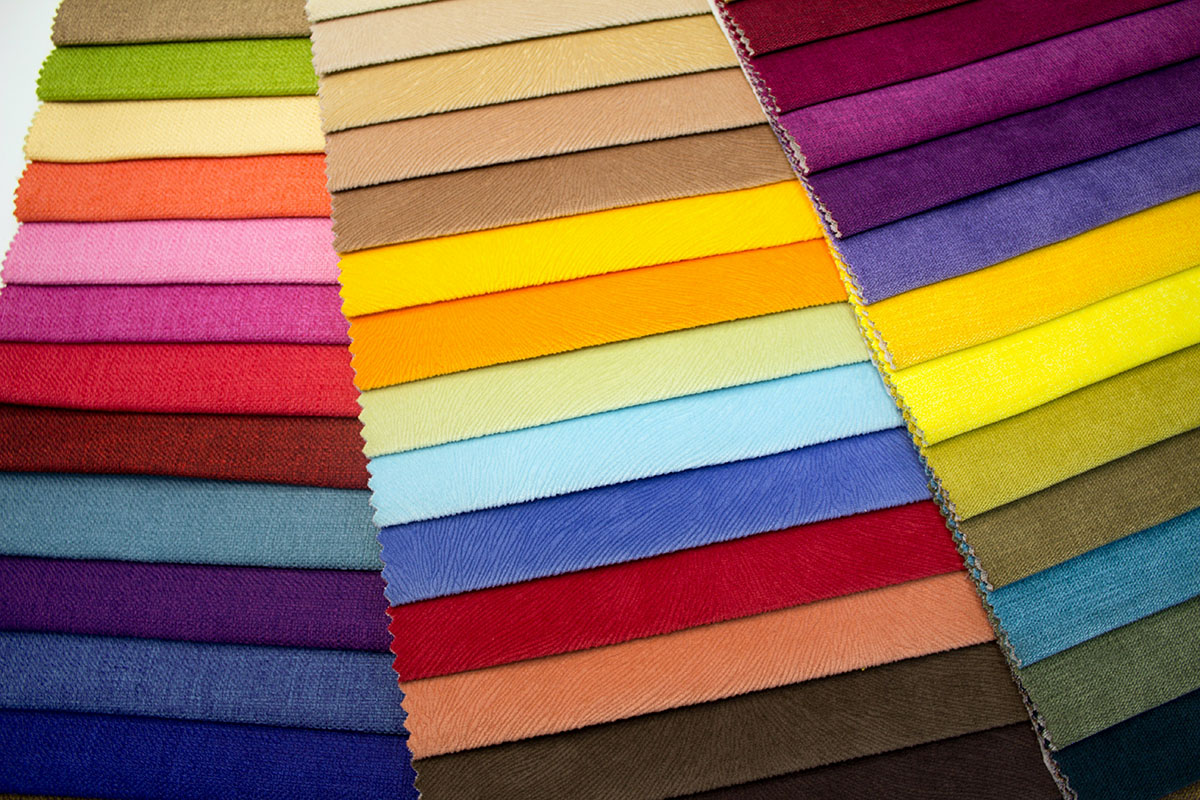Choosing the right fabric and materials for your custom apparel in San Marcos is essential. The fabric impacts not only the look but also the feel, durability, comfort, and overall quality of the finished product. Different fabric types cater to various needs, including:
- Natural Fabrics: Cotton, linen, wool, silk
- Synthetic Fabrics: Polyester, nylon, spandex
Understanding these materials helps you create apparel that meets both aesthetic and functional requirements. Selecting the appropriate fabric ensures your designs resonate with your audience while enhancing their experience with San Marcos custom t-shirt printing or other creative services.
Understanding Different Fabric Types
When selecting materials for custom apparel, it’s helpful to understand fabric types.
Natural Fabrics
- Cotton: Soft, breathable, and cost-effective. Ideal for casual wear.
- Linen: Lightweight and absorbent. Perfect for warm climates but wrinkles easily.
- Wool: Insulating and durable, great for outerwear; can be itchy for some.
- Silk: Luxurious and smooth, providing an upscale look; delicate and requires special care.
Synthetic Fabrics
- Polyester: Quick-drying and wrinkle-resistant. Suitable for activewear but can trap heat.
- Nylon: Lightweight with excellent strength and water resistance; can feel less breathable.
- Spandex: Offers exceptional stretch, making it ideal for fitted clothing; often blended with other fabrics for comfort.
Each type has unique benefits and drawbacks that impact the feel, durability, and performance of your custom apparel.
Factors to Consider When Selecting Apparel Materials
Selecting the right fabric involves several key factors that directly impact the functionality and comfort of your custom apparel:
- Fabric Weight (GSM): The weight of fabric, measured in grams per square meter (GSM), significantly influences the garment’s look and feel. Lighter fabrics are ideal for warm climates, while heavier options provide warmth and structure.
- Breathability: Breathable fabrics allow air circulation, promoting comfort during wear. Natural fibers like cotton excel in breathability, making them suitable for everyday wear. This quality is crucial for athletic apparel where perspiration management is essential.
- Moisture Control: Fabrics with moisture-wicking properties draw sweat away from the body, keeping you dry and comfortable. Polyester blends often feature this characteristic, enhancing performance in sportswear.
- Stretch and Flexibility: For movement-friendly clothing, consider fabrics with stretch capabilities. Materials that include spandex or elastane provide flexibility, ensuring ease of movement, particularly in activewear and fitted garments.
Attention to these factors aids in creating apparel that meets both aesthetic and functional needs.
Best Fabrics for Different Apparel Categories
Choosing the right fabric is essential for different types of clothing. Each category has specific needs, and understanding these can lead to better customization and customer satisfaction.
1. T-shirts
Cotton and cotton-poly blends are popular choices. They provide breathability, comfort, and durability, making them ideal for everyday wear.
2. Hoodies
Fleece and French terry are excellent options. Fleece offers warmth and softness, while French terry provides a lightweight feel with moisture-wicking properties.
3. Sportswear
Polyester and spandex blends dominate this category. Polyester is quick-drying and resistant to wrinkles, while spandex adds stretch for enhanced movement during physical activities.
4. Streetwear
Heavyweight jersey and fleece are favored fabrics. They offer a casual yet stylish look, providing both comfort and durability for daily wear.
5. Workwear
Polyester-cotton blends and will stand out for their durability. These materials resist fading and wrinkling while offering a professional appearance suitable for various work environments.
6. Luxury apparel
Silk, linen, and organic cotton cater to high-end fashion. Silk exudes elegance with its smooth texture, linen provides breathability with a relaxed look, while organic cotton emphasizes sustainability without compromising quality.
Fabric Properties and Their Impact on Customization
When customizing apparel, understanding fabric properties is essential for achieving desired results. Different printing methods interact uniquely with various materials:
- Screen Printing: Best suited for cotton and cotton-blend fabrics. The ink adheres well, ensuring vibrant colors and durability.
- Embroidery: Works effectively on heavier fabrics like twill and fleece, adding texture and depth to designs.
- Sublimation Printing: Ideal for polyester fabrics, as it embeds dye into the fibers, creating long-lasting images without affecting the fabric’s feel.
Selecting the right fabric enhances printing compatibility, which directly influences the quality of your designs. For instance, using a lightweight fabric for screen printing may lead to ink bleed or fading. Conversely, choosing a suitable material ensures vibrant prints and maintains garment integrity throughout its lifespan.
Exploring Sustainable Fabric Options
Sustainability plays a crucial role in fabric selection for custom apparel. As consumers become more environmentally conscious, choosing eco-friendly fabrics is essential for brands seeking to enhance their reputation and appeal.
Key Eco-Friendly Materials:
- Organic Cotton: Grown without harmful pesticides or fertilizers, organic cotton is not only better for the environment but also softer and more breathable for wearers.
- Recycled Polyester: Made from post-consumer plastic bottles, recycled polyester reduces waste and energy consumption while maintaining the durability and functionality of traditional polyester.
Selecting sustainable fabric options not only supports environmental health but also aligns your brand with modern consumer values. Prioritizing these materials can set your custom apparel apart in a competitive market, offering both style and responsibility.
Popular Fabrics for Different Styles
When exploring popular fabrics for different styles, understanding the unique benefits of various materials is essential. Each fabric brings distinct characteristics that cater to specific apparel needs.
- Cotton
- Benefits: Comfort and versatility
- Uses: Casual wear (T-shirts, etc.)
- Polyester
- Benefits: Quick-drying and wrinkle-resistant
- Uses: Activewear
- Nylon
- Benefits: Lightweight, strong, and water-resistant
- Uses: Jackets, outdoor gear
- Denim
- Benefits: Durable and stylish
- Uses: Jeans, jackets
- Fleece
- Benefits: Soft and warm
- Uses: Hoodies, winter wear
- Leather
- Benefits: Luxurious and Stylish
- Uses: Jackets, accessories
Choosing the Right Fabric and Materials for Your Custom Apparel Business Success
Selecting the appropriate fabric plays a crucial role in branding your custom apparel. Quality materials not only enhance the visual appeal but also affect comfort and durability, directly reflecting your brand’s values.
Key considerations include:
- Target Audience: Understand their preferences for comfort and style.
- Use Case: Choose fabrics that align with the intended purpose, whether casual wear or performance gear.
- Sustainability: Opt for eco-friendly options to attract environmentally-conscious consumers.
Making informed fabric choices is essential for elevating your brand identity and ensuring customer satisfaction.
FAQs
What are the key factors to consider when choosing fabric for custom apparel?
When selecting fabric for custom apparel, it’s important to consider factors such as fabric weight (GSM), breathability, moisture control, and stretch or flexibility. These elements contribute to the overall comfort, durability, and functionality of the clothing.
What are the differences between natural and synthetic fabrics?
Natural fabrics, like cotton, linen, wool, and silk, are derived from plant or animal sources and often offer breathability and comfort. Synthetic fabrics, such as polyester, nylon, and spandex, are man-made and typically provide durability and moisture-wicking properties. Each type has its own benefits and drawbacks depending on the intended use.
Which fabrics are best suited for specific types of apparel?
For T-shirts, cotton and cotton-poly blends work well; hoodies benefit from fleece or French terry; sportswear is best made from polyester and spandex blends; streetwear often uses heavyweight jersey or fleece; workwear can utilize polyester-cotton blends or twill; while luxury apparel is often crafted from silk, linen, or organic cotton.
How does fabric choice impact customization options in apparel?
The choice of fabric significantly affects customization methods such as screen printing, embroidery, and sublimation printing. Each fabric has different compatibility with these techniques, making it helpful to select the right material for successful branding and design.
What sustainable fabric options should I consider for custom apparel?
Sustainability is increasingly important in fabric selection. Eco-friendly materials like organic cotton and recycled polyester not only reduce environmental impact but also appeal to consumers who prioritize sustainable fashion choices, especially when seeking screen printing in San Marcos TX.
Why is fabric choice important for branding in custom apparel?
The right fabric choice enhances the quality and perception of your brand. High-quality materials can lead to better customer satisfaction and loyalty while reflecting your brand’s values—especially if you emphasize sustainability or comfort in your marketing.

